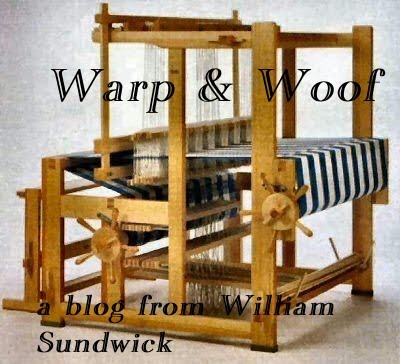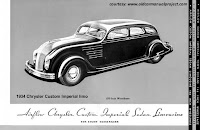“Avant-garage” Rock with a Rust Belt Sheen
William Sundwick
Cleveland has produced more than the Rock-and-Roll Hall of
Fame. Emerging in the 1970s, beneath the radar of its pop music mainstream, was
an avant-garde, experimental music scene, epitomized by David Thomas and Pere
Ubu.
Starting as a music critic, Thomas decided to try his hand
at producing the music he wrote about when he formed the band
Rocket from the Tombs in 1974. It didn’t last long, but its members liked
the project. Both Thomas and guitarist Peter Laughner decided to join up with four other Cleveland
area friends to start a new project in 1975. It’s not clear why they chose
the name “Pere Ubu” for the new band – after the main character in the avant
garde play by Alfred Jarry, Ubu Roi. Jarry’s 1896 play is pre-dada,
and was received by a skeptical audience who considered it to be childish, like
a nursery rhyme trying to pass itself off as meaningful. Indeed, some reviewers
have made similar comments about the music of Pere Ubu!
I disagree. The band has coined the term “avant-garage” to
describe its style. Thomas says it is a joke, intended to fool journalists who
are looking for a sound bite, a “genre” in which to place Pere Ubu. They began
with a style clearly in the garage rock mold – but, over time, evolved into a
much more openly experimental, or avant-garde, sound. They are still
performing, with many personnel changes, 44 years later. They’re still in
Cleveland, an archetypal midwestern Rust Belt city. It shows in their music.
David Thomas is there, as always (except for a hiatus in the ‘80s, when he went
solo, and the band disappeared for a while).
Thomas’ distinctive vocal style, a screechy, anxious,
dreamily disconnected-from-reality muttering, is nothing, if not avant-garde.
In addition, the varied instrumental back-ups have included EML synthesizer and
theremin through the
years, especially since the ‘90s. This is experimental rock, not mainstream –
critics have called it both “art punk” and “post punk.” Pere Ubu’s style was
influenced by French musique concrete of the ‘40s and ‘50s, where pre-recorded
non-musical sounds are incorporated into a larger musical tapestry. Pere Ubu
uses this technique with synthesizer and theremin to create backdrops like
science fiction B-film soundtracks from the 1950s.
The evolution of Pere Ubu’s style can be illustrated with seven
examples. Their first singles sound much like “Final Solution” –
strictly garage rock. Its lyrics relate
adolescent anxiety about social mal-adroitness and raging hormones. “D-d-don’t
need a cure” … “need a final solution!” But the EML synthesizer, played in those
early days by Allen Ravenstine, is clearly there.
The band’s first studio album was released in 1978, The Modern Dance. It greatly expands the
themes of the first singles. David Thomas practices his distinctive vocals. “Nonalignment Pact” is
lighter than some tracks on the album, and still sounds like garage rock of the
post-punk years. “At night I can see the stars on fire/I can see the world in
flames/And it’s all because of you/Or your thousand other names” followed by a
long list of women’s names, then the chorus, “It’s all because of you/It’s all
because of you girl!” “Sign my nonalignment pact/Nonalignment pact/It’s my
Nonalignment pact.” All played to bouncy dance music. “Street Waves” develops
Thomas’ screechy voice, with lyrics that
evoke a kind of “dance anxiety” – the obvious thrill from the electronic music
(synthesizer in full gear), tempered by insecurity about the nature of any
liaisons made in a supercharged urban environment.
Still on that first album, “Humor Me” strikes a
different tone. It may be a precursor of things to come. It’s a vocal protest of
the garage rock origins of the band, while carrying over many of the backup
band signatures – synthesizer, drums, guitar chords. But the lyrics tell a story of
social alienation and sexual frustration in a very different way. The chorus is
a plaintive reggae chant, “It’s a joke, mon!” – as if the real anxiety felt by
the singer is merely a joke to the rest of the world. Perhaps a truer insight
into Pere Ubu’s soul than their earlier work?
By the mid-90s, Pere Ubu had been through a dissolution,
deaths of several early band members, David Thomas launching a solo career, then
re-uniting the band with different personnel. In 1995, they released Ray Gun Suitcase, which
explores new musical themes with a noticeable swing to experimental sound – tracks with theremin, played by Robert Wheeler,
recalling those old B-films. “Folly of Youth” captures
the spirit well, especially with its YouTube video. It wants to be a “suitcase”
and “hang around inside your Greyhound terminal.” Alienation comes up again in “My Friend Is a Stooge,” with
a shout out to T.S. Eliot and “Hollow Men.” It also touches the role of mass
media in society, “My friend is a stooge for the media priests. He does the
weather map for Channel 3.” He may even be a dog, since he “Stares at the rug
if I leave him alone. Lays around the house in misery. He toes the line for the
company.”
The album closes with a track which is downright depressing.
“Down by the River II”
uses some new devices, like electric cello, to create a melancholy sound – is everything
hopeless? “The house on fire. The treaty broken. I call for the law. The law’s
a token.” Then, “Trip is the worst. I don’t mean maybe. I call for the captain.
She cries like a baby. As bad as it gets, it’s gotten worse. I want to run. I
had to learn to crawl first.”
But it’s not the end. Pere Ubu goes on. The final verse
in “Down by the River II” leaves us suspended in time, “Bye-bye. Bye-bye, baby,
my friend. It’s time to leave and I don’t know when.”










































